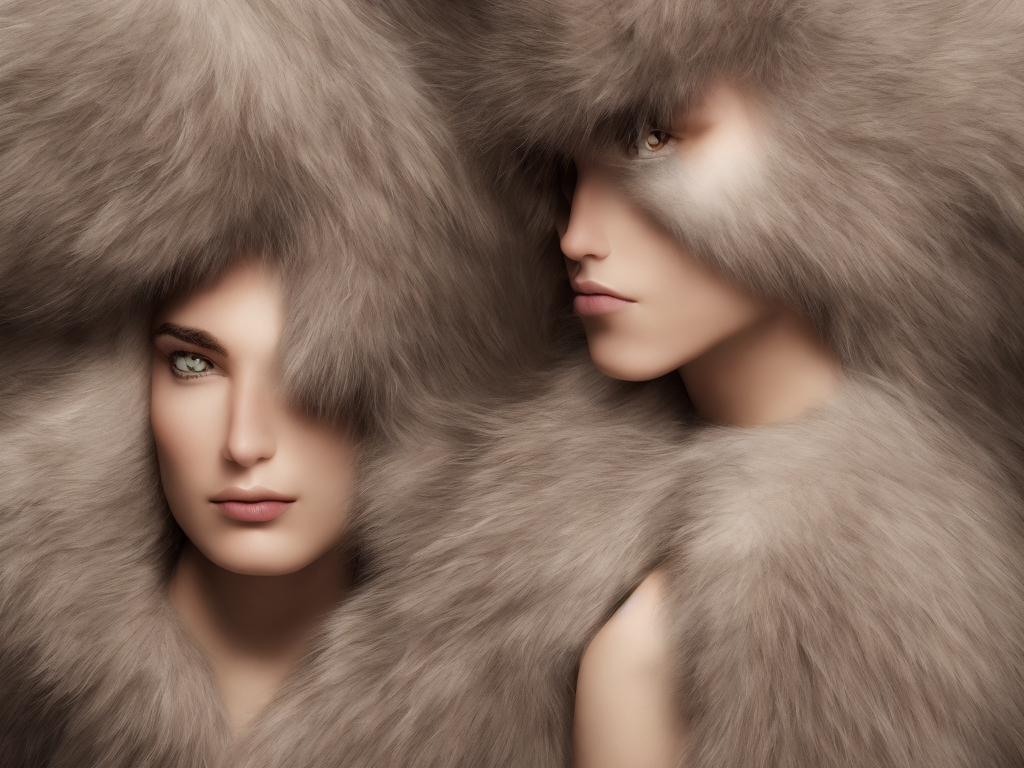
The Difference Between Hair And Fur: Understanding the Characteristics
Hair and fur are two commonly used terms when describing the covering on an animal's body. While it may seem like the terms are interchangeable, there are distinct differences between hair and fur in terms of structure, growth cycles, and function. In this article, we will delve into these differences to gain a better understanding of the fascinating world of animal coverings.
Let's begin by discussing the structure of hair and fur. Hair is made up of a protein called keratin, which is the same protein found in our nails and skin. Each hair strand consists of three layers: the medulla, cortex, and cuticle. The medulla is the innermost layer and is sometimes absent in fine hair strands. The cortex gives the hair its color and strength, while the cuticle is the outermost layer that protects the hair shaft.
On the other hand, fur is a dense coat of hair that covers the skin of mammals. Unlike hair, fur tends to be shorter and denser, providing excellent insulation and protection from the environment. Fur also has a unique structure with two coat types: the undercoat and the guard hairs. The undercoat is made up of soft, short hairs that provide insulation, while the guard hairs are longer and coarser, offering protection against moisture and dirt.
The growth cycles of hair and fur differ significantly. Hair grows in a continuous cycle consisting of three phases: anagen, catagen, and telogen. The anagen phase is the active growth phase, during which the hair follicle produces new cells to push the hair shaft out. This phase usually lasts for a few years, determining the length of an individual's hair. The catagen phase is a transitional phase where the hair follicle shrinks and stops producing new cells. Lastly, the telogen phase is the resting phase where the old hair is shed, making way for new hair growth.
In contrast, fur growth is highly seasonal and varies depending on the species and the climate in which the animal lives. Many mammals, such as bears and foxes, grow thicker fur during the colder months to provide better insulation. This process is known as molting- shedding of the old fur to make room for the new growth. Molting usually occurs once or twice a year, allowing animals to adapt their coat density to the changing seasons.
The function of hair and fur also sets them apart. Hair serves multiple purposes in different animals. Primarily, hair provides thermal regulation, protecting animals from both heat and cold. For instance, the hair on our bodies helps regulate body temperature by trapping air near the skin, creating a layer of insulation. Additionally, hair provides protection from harmful UV rays, acting as a shield for the skin.
Fur, on the other hand, has evolved to serve a more specific role. The dense and insulating properties of fur allow animals to survive in extreme environments. It helps retain body heat and enables them to stay warm in cold weather conditions. Fur also aids in camouflage, allowing animals to blend into their surrounding environment and avoid predators or stalk prey more successfully. Furthermore, some fur has unique adaptations, such as the hollow structure found in polar bear fur, which assists in buoyancy during swimming.
Another critical difference between hair and fur lies in their growth patterns. Hair generally grows at a predictable rate throughout one's life, with minor variations depending on factors like health and age. Hair loss is a natural process as part of the hair growth cycle, but it usually occurs gradually and continuously. Fur, however, undergoes more extreme shedding during molting seasons. This shedding allows animals to replace damaged or worn-out fur, ensuring optimal insulation and protection.
While hair and fur may seem similar at first glance, their distinct characteristics set them apart. Understanding these differences can help us appreciate the remarkable adaptations in the animal kingdom. Hair's continuous growth cycle, multi-functional role, and longer growth patterns make it suitable for humans and many other mammals. Fur, with its shorter length, denser structure, seasonal growth, and insulation properties, is a valuable adaptation for various mammals, especially those inhabiting extreme climates.
In conclusion, the differences between hair and fur go beyond mere terminology. The distinct structures, growth cycles, functions, and growth patterns differentiate them significantly. Hair and fur are fascinating features of the animal kingdom that have evolved over millions of years, ensuring the survival and adaptation of species in their respective environments. So, whether you are tending to your own luscious locks or admiring the beautiful fur of a wild animal, take a moment to appreciate the remarkable characteristics that make each unique.
 Self-Instruct
Self-Instruct